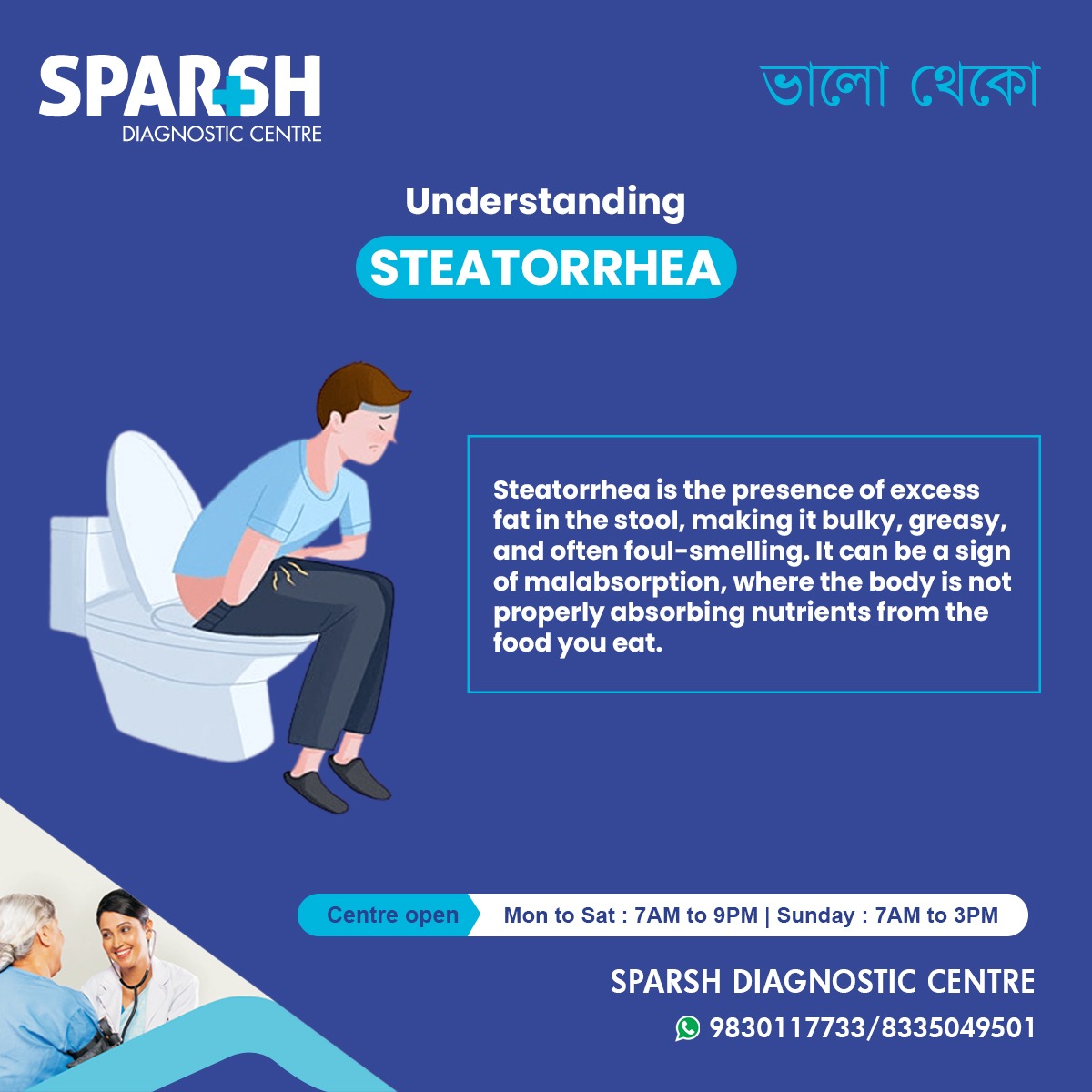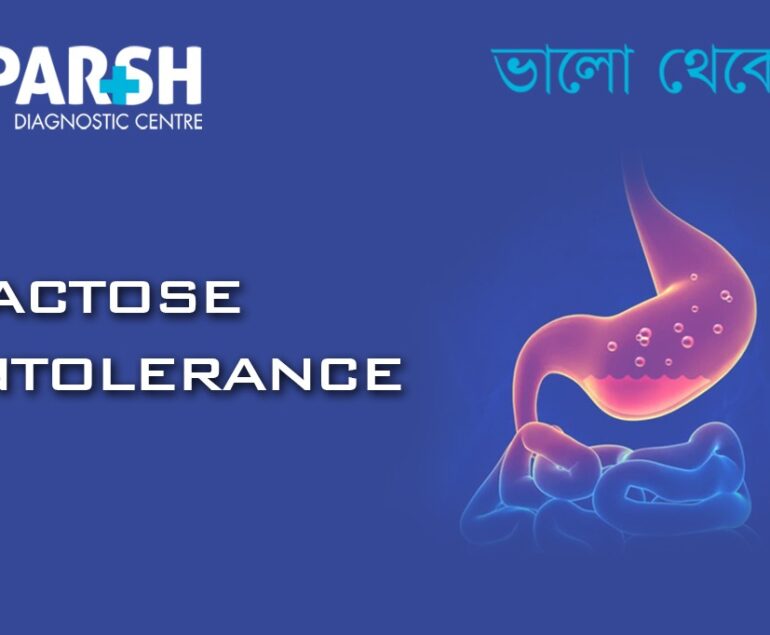Steatorrhea refers to the presence of excess fat in the stool, making it bulky, greasy, pale, and foul-smelling. This condition is often a telltale sign of an underlying digestive disorder that hampers the body’s ability to properly absorb fats from the food you consume. Recognizing the symptoms early and seeking proper medical guidance can help prevent complications and improve overall digestive health.
In this blog, we explore what causes steatorrhea, how it is diagnosed, treatment options, and what steps you can take to manage or prevent it.
What is Steatorrhea?
Steatorrhea is a medical term derived from Greek: “steato” meaning fat and “rrhea” meaning flow or discharge. It describes a condition where undigested fat is excreted in the stool, usually indicating a problem with digestion or nutrient absorption.

Key Characteristics:
Oily or greasy stool
Bulky and pale in color
Floats on water
Foul-smelling
May be difficult to flush
In healthy individuals, the digestive system breaks down fats in the intestine using enzymes and bile. However, in steatorrhea, this process is disrupted, leading to fat being passed out in the stool.
Symptoms of Steatorrhea
Steatorrhea is primarily identified by changes in the stool, but it may also present with other gastrointestinal and systemic symptoms, depending on the underlying cause.
Common Signs and Symptoms:
Fatty, foul-smelling stool
Loose or watery stool
Urgency or increased frequency of bowel movements
Bloating and abdominal cramping
Unintended weight loss
Fatigue and weakness
Nutrient deficiencies (especially fat-soluble vitamins A, D, E, and K)
In children, steatorrhea may result in failure to thrive, stunted growth, or poor weight gain.
Causes of Steatorrhea
Steatorrhea is not a disease in itself but a symptom of an underlying problem with fat digestion or absorption. The causes may range from enzyme deficiencies to structural issues in the intestine.
1. Malabsorption Syndromes
These conditions interfere with the intestine’s ability to absorb nutrients:
Celiac disease – An autoimmune reaction to gluten damaging the small intestine.
Crohn’s disease – A type of inflammatory bowel disease (IBD).
Tropical sprue – A rare condition common in tropical regions.
Short bowel syndrome – Due to surgical removal of parts of the intestine.
2. Pancreatic Insufficiency
The pancreas produces enzymes that digest fat. If it fails to produce enough enzymes, fats remain undigested:
Cystic fibrosis
Pancreatic cancer
3. Liver and Biliary Disorders
Bile salts from the liver help emulsify fats:
Gallstones blocking bile flow
4. Infections
Giardiasis – Caused by Giardia lamblia, a parasite that impairs fat absorption.
Bacterial overgrowth – Alters the gut flora and disrupts digestion.
5. Medications and Surgeries
Orlistat – A weight-loss drug that blocks fat absorption.
Bariatric surgery – Procedures like gastric bypass may lead to malabsorption.
6. Dietary Factors
High-fat diet in individuals with already impaired digestion.
Lactose intolerance and other food sensitivities.
Diagnosis of Steatorrhea
To confirm steatorrhea and identify its underlying cause, healthcare providers use a combination of clinical evaluation and laboratory tests.
1. History and Physical Examination
Your doctor will ask about:
Stool appearance and frequency
Dietary habits
Associated symptoms (weight loss, fatigue, bloating)
2. Stool Analysis
72-hour fecal fat test – Measures the amount of fat in the stool over three days.
Sudan stain test – Detects fat globules under a microscope.
3. Blood Tests
To check for nutritional deficiencies (especially fat-soluble vitamins)
Liver and pancreatic enzyme levels
4. Imaging Studies
Abdominal ultrasound or CT scan – To evaluate pancreas, liver, and gallbladder.
MRCP – Magnetic resonance cholangiopancreatography to check bile ducts.
5. Endoscopy and Biopsy
If celiac or inflammatory bowel disease is suspected, endoscopic biopsies of the small intestine may be needed.
Treatment of Steatorrhea
The treatment of steatorrhea focuses on managing the underlying cause, improving fat absorption, and correcting nutritional deficiencies.
1. Treat the Underlying Condition
Celiac disease – Lifelong gluten-free diet
Pancreatic insufficiency – Pancreatic enzyme replacement therapy (PERT)
Infections – Antiparasitic or antibiotic therapy
Inflammatory bowel disease – Immunosuppressants or biologics
2. Dietary Modifications
Low-fat diet – Especially helpful in pancreatic or liver conditions.
Medium-chain triglycerides (MCTs) – These are more easily absorbed than long-chain fats.
Lactose-free or gluten-free diets – As required.
3. Pancreatic Enzymes
In cases of pancreatic insufficiency, enzyme supplements (like pancrelipase) help digest fat more efficiently.
4. Vitamin Supplementation
Fat-soluble vitamins (A, D, E, K)
Administered orally or intramuscularly depending on severity
5. Hydration and Electrolyte Balance
Frequent, fatty stools may lead to dehydration and electrolyte imbalances, which should be corrected promptly.
Complications of Untreated Steatorrhea
If left unmanaged, steatorrhea can lead to a number of serious complications:
Severe weight loss
Osteoporosis (due to vitamin D deficiency)
Neurological problems (due to lack of vitamin E or B12)
Delayed development in children
Increased susceptibility to infections
Prevention and Lifestyle Tips
While not all causes of steatorrhea are preventable, the following measures can reduce your risk:
1. Eat a Balanced Diet
Include a mix of proteins, healthy fats, and complex carbohydrates. Avoid excessively high-fat or junk-food diets.
2. Avoid Trigger Foods
If diagnosed with conditions like celiac or lactose intolerance, strictly avoid gluten or dairy, respectively.
3. Follow Medical Advice
If you’ve been prescribed pancreatic enzymes or advised dietary changes, follow them consistently.
4. Routine Checkups
If you have a chronic condition like pancreatitis or IBD, routine medical follow-up is vital to prevent complications like steatorrhea.
5. Personal Hygiene and Sanitation
To prevent infections like Giardia, ensure safe drinking water, good hygiene, and proper food handling practices.
When to See a Doctor
Consult your healthcare provider if you notice any of the following:
Persistent greasy or foul-smelling stools
Unexplained weight loss
Bloating, fatigue, or abdominal discomfort
Signs of vitamin deficiency (like night blindness, brittle nails, bruising easily)
Early diagnosis and timely management can prevent serious nutritional complications and improve quality of life.
Steatorrhea may seem like a minor inconvenience at first, but it is often a signal of underlying digestive issues that require medical attention. Identifying the cause through stool analysis, imaging, and blood tests helps guide effective treatment. Whether due to enzyme deficiency, malabsorption, or an infection, addressing the root cause is essential to restore healthy digestion and nutrient absorption.
If you’re experiencing symptoms of steatorrhea or are concerned about persistent changes in your stool, consult a gastroenterologist. Comprehensive evaluations and timely treatment can go a long way in restoring your gut health.
Centre Open:
🕘 Mon to Sat: 7 AM – 9 PM
🕘 Sunday: 7 AM – 3 PM
Contact:
📞 9830117733 / 8335049501
🌐 Website
#BhaloTheko
Disclaimer:
No content on this site, regardless of date, should ever be used as a substitute for direct medical advice from your doctor or other qualified clinician.

![]()






[…] Fat malabsorption (steatorrhea) – greasy, bulky stools […]
[…] Fatty stools (steatorrhea), which may float and be foul-smelling […]